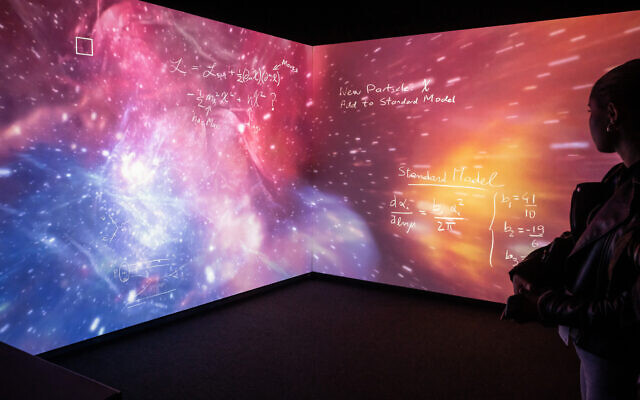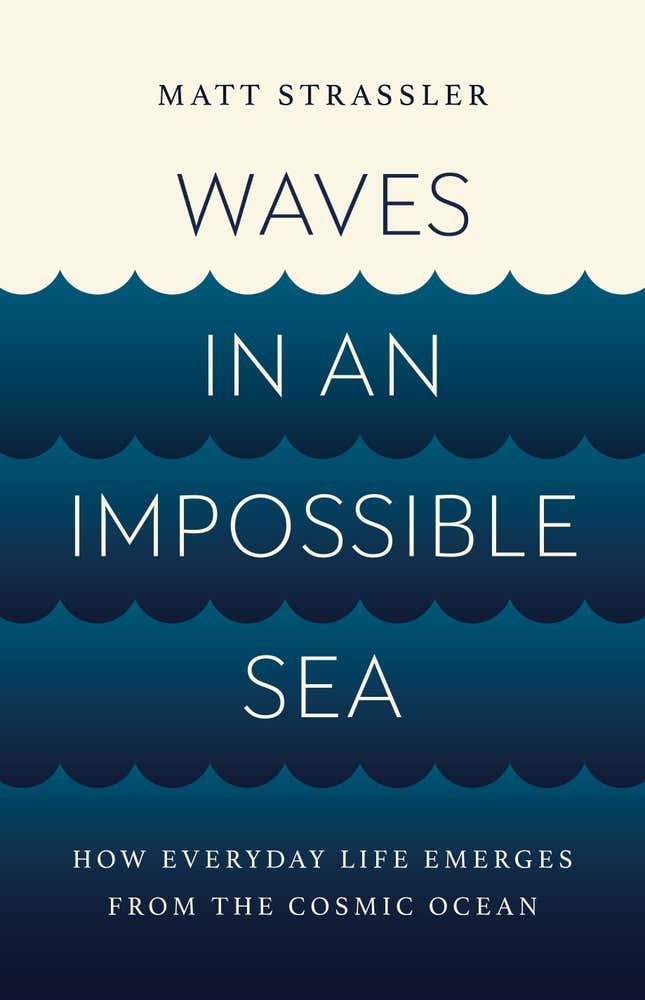If the Higgs can reach the Hidden Valley, we will see new physics already in next-generation accelerators
IMAGE: THE SEARCH FOR EXOTIC HIGGS BOSON DECAYS IN FUTURE LEPTON COLLIDERS: 1) AN ELECTRON AND A POSITRON FROM OPPOSING BEAMS COLLIDE; 2) THE COLLISION PRODUCES A HIGH-ENERGY HIGGS BOSON; 3) THE BOSON DECAYS INTO TWO EXOTIC PARTICLES MOVING AWAY FROM THE AXIS OF THE BEAMS; 4) EXOTIC PARTICLES DECAY INTO PAIRS OF QUARK-ANTIQUARK, VISIBLE TO DETECTORS. view more
CREDIT: SOURCE: IFJ PAN
It may be that the famous Higgs boson, co-responsible for the existence of masses of elementary particles, also interacts with the world of the new physics that has been sought for decades. If this were indeed to be the case, the Higgs should decay in a characteristic way, involving exotic particles. At the Institute of Nuclear Physics of the Polish Academy of Sciences in Cracow, it has been shown that if such decays do indeed occur, they will be observable in successors to the LHC currently being designed.
When talking about the 'hidden valley', our first thoughts are of dragons rather than sound science. However, in high-energy physics, this picturesque name is given to certain models that extend the set of currently known elementary particles. In these so-called Hidden Valley models, the particles of our world as described by the Standard Model belong to the low-energy group, while exotic particles are hidden in the high-energy region. Theoretical considerations suggest then the exotic decay of the famous Higgs boson, something that has not been observed at the LHC accelerator despite many years of searching. However, scientists at the Institute of Nuclear Physics of the Polish Academy of Sciences (IFJ PAN) in Cracow argue that Higgs decays into exotic particles should already be perfectly observable in accelerators that are successors to the Large Hadron Collider – if the Hidden Valley models turn out to be consistent with reality.
“In Hidden Valley models we have two groups of particles separated by an energy barrier. The theory is that there could then be exotic massive particles which could cross this barrier under specific circumstances. The particles like Higgs boson or hypothetic Z’ boson would act as communicators between the particles of both worlds. The Higgs boson, one of the most massive particle of the Standard Model, is a very good candidate for such a communicator,” explains Prof. Marcin Kucharczyk (IFJ PAN), lead author of an article in the Journal of High Energy Physics, which presents the latest analyses and simulations concerning the possibility of detecting Higgs boson decays in the future lepton accelerators.
The communicator, after passing into the low energy region, would decay into two rather massive exotic particles. Each of these would, in picoseconds – that is, trillionths of a second – decay into another two particles, with even smaller masses, which would then be within the Standard Model. So what signs would be expected in the detectors of future accelerators? The Higgs itself would remain unnoticed, as would the two Hidden Valley particles. However, the exotic particles would gradually diverge and eventually decay, generally into quark-antiquark beauty pairs visible in modern detectors as jets of particles shifted from the axis of the lepton beam
“Observations of Higgs boson decays would therefore consist of searching for the jets of particles produced by quark-antiquark pairs. Their tracks would then have to be retrospectively reconstructed to find the places where exotic particles are likely to have decayed. These places, professionally called decay vertices, should appear in pairs and be characteristically shifted with respect to the axis of the colliding beams in the accelerator. The size of these shifts depends, among other things, on masses and average lifetime of exotic particles appearing during the Higgs decay”, says Mateusz Goncerz, M.Sc. (IFJ PAN), co-author of the paper in question.
The collision energy of protons at the LHC, currently the world's largest particle accelerator, is up to several teraelectronvolts and is theoretically sufficient to produce Higgs capable of crossing the energy barrier that separates our world from the Hidden Valley. Unfortunately, protons are not elementary particles – they are composed of three valence quarks bound by strong interactions, capable of generating huge numbers of constantly appearing and disappearing virtual particles, including quark-antiquark pairs. Such a dynamic and complex internal structure produces huge numbers of secondary particles in proton collisions, including many quarks and antiquarks with large masses. They form a background in which it becomes practically impossible to find the particles from the exotic Higgs boson decays that are being sought.
The detection of possible Higgs decays to these states should be radically improved by accelerators being designed as successors to the LHC: the CLIC (Compact Linear Collider) and the FCC (Future Circular Collider). In both devices it will be possible to collide electrons with their anti-material partners, the positrons (with CLIC dedicated to this type of collision, while FCC will also allow collisions of protons and heavy ions). Electrons and positrons are devoid of internal structure, so the background for exotic Higgs boson decays should be weaker than at the LHC. Only will it be sufficiently so to discern the valuable signal?
In their research, physicists from the IFJ PAN took into account the most important parameters of the CLIC and FCC accelerators and determined the probability of exotic Higgs decays with final states in the form of four beauty quarks and antiquarks. To ensure that the predictions cover a wider group of models, the masses and mean lifetimes of the exotic particles were considered over suitably wide ranges of values. The conclusions are surprisingly positive: all indications are that, in future electron-positron colliders, the background of exotic Higgs decays could be reduced even radically, by several orders of magnitude, and in some cases could even be considered negligible.
The existence of particle-communicators is not only possible in Hidden Valley models, but also in other extensions of the Standard Model. So if the detectors of future accelerators register a signature corresponding to the Higgs decays analysed by the Cracow researchers, this will only be the first step on the road to understanding new physics. The next will be to collect a sufficiently large number of events and determine the main decay parameters that can be compared with the predictions of theoretical models of the new physics.
“The main conclusion of our work is therefore purely practical. We are not sure whether the new physics particles involved in Higgs boson decays will belong to the Hidden Valley model we used. However, we have treated this model as representative of many other proposals for new physics and have shown that if, as predicted by the model, the Higgs bosons decay into exotic particles, this phenomenon should be perfectly visible in those electron and positron colliders which are planned to be launched in the near future”, concludes Prof. Kucharczyk.
The research in question was funded by an OPUS grant from the Polish National Science Centre.
The Henryk Niewodniczański Institute of Nuclear Physics (IFJ PAN) is currently one of the largest research institutes of the Polish Academy of Sciences. A wide range of research carried out at IFJ PAN covers basic and applied studies, from particle physics and astrophysics, through hadron physics, high-, medium-, and low-energy nuclear physics, condensed matter physics (including materials engineering), to various applications of nuclear physics in interdisciplinary research, covering medical physics, dosimetry, radiation and environmental biology, environmental protection, and other related disciplines. The average yearly publication output of IFJ PAN includes over 600 scientific papers in high-impact international journals. Each year the Institute hosts about 20 international and national scientific conferences. One of the most important facilities of the Institute is the Cyclotron Centre Bronowice (CCB), which is an infrastructure unique in Central Europe, serving as a clinical and research centre in the field of medical and nuclear physics. In addition, IFJ PAN runs four accredited research and measurement laboratories. IFJ PAN is a member of the Marian Smoluchowski Kraków Research Consortium: "Matter-Energy-Future", which in the years 2012-2017 enjoyed the status of the Leading National Research Centre (KNOW) in physics. In 2017, the European Commission granted the Institute the HR Excellence in Research award. As a result of the categorization of the Ministry of Education and Science, the Institute has been classified into the A+ category (the highest scientific category in Poland) in the field of physical sciences.
SCIENTIFIC PUBLICATIONS:
“Search for exotic decays of the Higgs boson into long-lived particles with jet pairs in the final state at CLIC”
M. Kucharczyk, M. Goncerz
Journal of High Energy Physics, 131, 2023
DOI: https://doi.org/10.1007/JHEP03(2023)131
LINKS:
The website of the Institute of Nuclear Physics, Polish Academy of Sciences.
Press releases of the Institute of Nuclear Physics, Polish Academy of Sciences.
IMAGES:
IFJ230518b_fot01s.jpg
HR: http://press.ifj.edu.pl/news/2023/05/18/IFJ230518b_fot01.jpg
The search for exotic Higgs boson decays in future lepton colliders: 1) an electron and a positron from opposing beams collide; 2) the collision produces a high-energy Higgs boson; 3) the boson decays into two exotic particles moving away from the axis of the beams; 3) exotic particles decay into pairs of quark-antiquark, visible to detectors. (Source: IFJ PAN)
JOURNAL
Journal of High Energy Physics
ARTICLE TITLE
Search for exotic decays of the Higgs boson into long-lived particles with jet pairs in the final state at CLIC
ARTICLE PUBLICATION DATE
17-Mar-2023
Demystifying vortex rings in nuclear fusion, supernovae
A mathematical model linking these vortices with more pedestrian types, like smoke rings, could help engineers control their behavior in power generation and more
Peer-Reviewed PublicationBetter understanding the formation of swirling, ring-shaped disturbances—known as vortex rings—could help nuclear fusion researchers compress fuel more efficiently, bringing it closer to becoming a viable energy source.
The model developed by researchers at the University of Michigan could aid in the design of the fuel capsule, minimizing the energy lost while trying to ignite the reaction that makes stars shine. In addition, the model could help other engineers who must manage the mixing of fluids after a shock wave passes through, such as those designing supersonic jet engines, as well as physicists trying to understand supernovae.
"These vortex rings move outward from the collapsing star, populating the universe with the materials that will eventually become nebulae, planets and even new stars—and inward during fusion implosions, disrupting the stability of the burning fusion fuel and reducing the efficiency of the reaction," said Michael Wadas, a doctoral candidate in mechanical engineering at U-M and corresponding author of the study.
"Our research, which elucidates how such vortex rings form, can help scientists understand some of the most extreme events in the universe and bring humanity one step closer to capturing the power of nuclear fusion as an energy source," he said.
Nuclear fusion pushes atoms together until they merge. This process releases several times more energy than breaking atoms apart, or fission, which powers today's nuclear plants. Researchers can create this reaction, merging forms of hydrogen into helium, but at present, much of the energy used in the process is wasted.
Part of the problem is that the fuel can't be neatly compressed. Instabilities cause the formation of jets that penetrate into the hotspot, and the fuel spurts out between them—Wadas compared it to trying to squish an orange with your hands, how juice would leak out between your fingers.
Vortex rings that form at the leading edge of these jets, the researchers have shown, are mathematically similar to smoke rings, the eddies behind jellyfish and the plasma rings that fly off the surface of a supernova.
Perhaps the most famous approach to fusion is a spherical array of lasers all pointing toward a spherical capsule of fuel. This is how experiments are set up at the National Ignition Facility, which has repeatedly broken records for energy output in recent years.
The energy from the lasers vaporizes the layer of material around the fuel—a nearly perfect, lab-grown shell of diamond in the latest record-setter in December 2022. When that shell vaporizes, it drives the fuel inward as the carbon atoms fly outward. This generates a shockwave, which pushes the fuel so hard that the hydrogen fuses.
While the spherical fuel pellets are some of the most perfectly round objects humans have ever made, each has a deliberate flaw: a fill tube, where the fuel enters. Like a straw stuck in that crushed orange, this is the most likely place for a vortex-ring-led jet to form when the compression starts, the researchers explained.
"Fusion experiments happen so fast that we really only have to delay the formation of the jet for a few nanoseconds," said Eric Johnsen, an associate professor of mechanical engineering at U-M, who supervised the study.
The study brought together the fluid mechanics expertise of Wadas and Johnsen as well as the nuclear and plasma physics knowledge in the lab of Carolyn Kuranz, an associate professor of nuclear engineering and radiological sciences.
"In high-energy-density physics, many studies point out these structures, but haven’t clearly identified them as vortex rings," said Wadas.
Knowing about the deep body of research into the structures seen in fusion experiments and astrophysical observations, Wadas and Johnsen were able to draw on and extend that existing knowledge rather than trying to describe them as completely new features.
Johnsen is particularly interested in the possibility that vortex rings could help drive the mixing between heavy elements and lighter elements when stars explode, as some mixing process must have occurred to produce the composition of planets like Earth.
The model can also help researchers understand the limits of the energy that a vortex ring can carry, and how much fluid can be pushed before the flow becomes turbulent and harder to model as a result. In ongoing work, the team is validating the vortex ring model with experiments.
The research is funded by Lawrence Livermore National Laboratory and the Department of Energy, with computational resources provided by the Extreme Science and Engineering Discovery Environment through the National Science Foundation and the Oak Ridge Leadership Computing Facility.
Study: Saturation of vortex rings ejected from shock-accelerated interfaces. (DOI: 10.1103/PhysRevLett.130.194001)
JOURNAL
Physical Review Letters
















